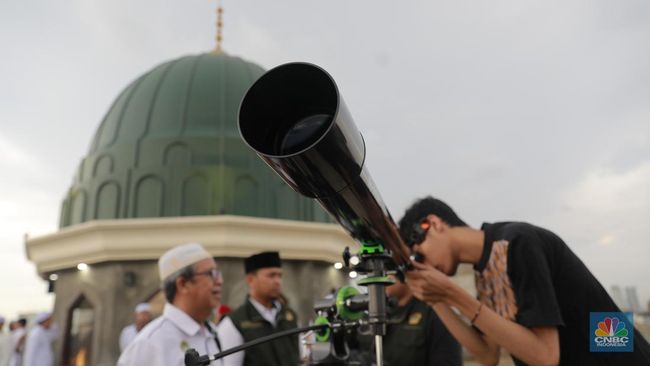At first glance, the official specs of the Switch 2 don't seem too different from the original, but plenty of improvements are buried in the details. For instance, it boasts "10x the graphics performance" compared to the original Switch, according to Nvidia, which built the custom processor powering the Switch 2. With the new console set to launch this week on June 5, it's worth digging deeper to see what's changed.
The Switch 2 is priced at $450 alone or $500 in a bundle with Mario Kart World, the headliner of the console's launch games. Here's all the info on how to preorder the Switch 2.
Note that we're mostly comparing the Switch 2 to the original Switch 1 released in March 2017, because looping in the Switch Lite gets complicated.
Nintendo Switch 2 vs. Switch OLED vs. Switch 1
| Switch 2 | Switch OLED | Switch 1 |
| $450 | $350 | $300 |
| June 5, 2025 | Oct. 8, 2021 | March 3, 2017 |
| Custom Nvidia | Custom Tegra | Custom Tegra |
| 256GB | 64GB | 32GB |
| 5,220 mAh | 4,310 mAh | 4,310 mAh |
| 2-6.5 hours | 4.5-9 hours | 4.5-9 hours |
| 4K (3,840 x 2,160) | HD (1,920 x 1,080 pixels) | HD (1,920 x 1,080 pixels) |
| 120 fps | 60 fps | 60 fps |
| HDR / VRR up to 120Hz | N/A | N/A |
| 166 x 272 x 13.9mm | 102 x 242 x 13.9mm | 102 x 239 x 13.9mm |
| 7.9 inches | 7.0 inches | 6.2 inches |
| 401 g | 320 g (0.93 lbs.) | 297 g (0.88 lbs.) |
| 2x USB-C, 3.5mm | USB-C, 3.5mm | USB-C, 3.5mm |
Design
Broadly, the Switch 2 is a larger version of its predecessor, with everything looking slightly inflated: bigger footprint, bigger screen, bigger Joy-Cons.
Original Switch: The original Switch, with Joy-Cons slotted into the side rails, is a little over 9.4 inches wide, 4 inches tall, a little over half an inch thick and weighs about 10.5 ounces (297 grams). The Joy-Cons slide into place from the top of the device's sides, while a thin wedge of plastic pops out of the back of the console to serve as a kickstand.
The Switch also came with a dock, which the console could slot into for recharging and outputting to a TV or large display via HDMI port.
Switch OLED: The Switch OLED is ever-so-slightly wider to accommodate the larger display, but the same height in order to be compatible with Joy-Cons.
Switch 2: The new Switch 2 is bigger in every way, but it has the same overall shape and layout as the original. The new Joy-Cons will indeed be held in place on the console magnetically, and connect to the console via pins. The new console also sports a wide U-shaped kickstand that spans almost its entire rear width, which can be moved around to prop up the Switch 2 at a variety of angles. Nintendo says the console has more powerful speakers, which we're looking forward to testing.
The Switch 2's dock is largely similar in function though it has rounded edges and an internal fan to cool down the console during long game sessions. More importantly, it can output games in 4K to TVs, but only for select games.
From the January reveal trailer, a Joy-Con comparison between the Switch 1 (left) and Switch 2 (right).
Screenshot by David Lumb/CNETJoy-Cons
The Joy-Cons were a marvel when they arrived on the first Switch, and while they're functionally similar in its successor, the Switch 2's controllers have been upgraded.
Original Switch: The Switch Joy-Cons are simple but powerful controllers that slide on and off the console via plastic rails, connecting and recharging via pins on the side. Detach, and they become their own micro-controllers, with little shoulder buttons to boot. The Joy-Cons are unchanged on the Switch OLED.
A side view of the Switch 2 Joy-Con (top) compared to the Switch 1 Joy-Con (bottom).
Switch 2: The new console's Joy-Cons are larger to fit the Switch 2, and lock into the side of the console via powerful magnets -- there are small inward-facing buttons to the side of ZR and ZL to detach the controllers from the console. The larger Joy-Cons have longer L and R outside shoulder buttons, as well as much wider SL and SR internal shoulder buttons, which are accessible when detached from the console.
The Nintendo Switch 2 includes these colored caps to put on the end of Joy-Cons to make scrolling on a surface easier when using them in mouse mode.
Nintendo/screenshot by CNETAnd yes, you can use the Switch 2 Joy-Cons as mice by placing their inner edges flat on a surface. During the Nintendo Direct, we saw one being used to control active action games like the wheelchair basketball-simulating DragXDrive and strategy games like Civilization VII. They have a removable cap that can be slipped on the inside edge to make running the controller back and forth on surfaces in mouse mode smoother.
The Switch 2 looks just like the rumors said.
NintendoDisplay size
Original Switch: The original Switch has a 6.2-inch LCD screen with 1,280x720-pixel resolution, which was reasonably impressive at launch in 2017 but has been outclassed by newer handhelds with sharper displays. The Switch Lite, the more portable and affordable version, has a 5.5-inch LCD screen.
Switch OLED: The Switch OLED's display, besides having deeper darks and an overall better picture than the base game, is larger at 7 inches. To fit into the overall same frame as the original Switch, the bezels on the Switch OLED have been drastically minimized.
Switch 2: Unsurprisingly, the Switch 2's larger size means a larger display. The new console has a 7.9-inch 1080p LCD screen that can get up to 120Hz refresh rate in handheld mode, or up to 4K when docked and outputting to a TV.
Why no OLED display? Possibly to save on costs... or perhaps to give Nintendo room to release a Switch 2 OLED version down the line.
Watch this: More Details of the Nintendo Switch 2 Revealed: Supercut
15:41
CPU/GPU
Original Switch: The original Switch runs on an Nvidia custom Tegra X1 processor split into four ARM Cortex A57 CPU cores, and according to Hackaday, there are four extra A53 cores that aren't used. The Switch Lite and Switch OLED have the same hardware.
Switch 2: Once again, Nintendo hasn't released any official info on the Switch 2's specs, even after the Nintendo Direct reveal stream -- and the most the company reveals is that it has a "custom processor made by Nvidia" on the Switch 2's official specs page. Nvidia confirmed it also has a custom GPU, claiming that the new console has "10x the graphics performance" of the Switch 1, and the custom processor's AI-powered features include Deep Learning Super Sampling (DLSS), face tracking and background removal for video chat and real-time ray tracing.
We do still have more supposed details from previous leaks. Months ago on X (formerly Twitter), leaker Zuby_Tech posted that the Switch 2's CPU will be an eight-core Arm Cortex A78C. They also suggested that the GPU will be an Nvidia T239 Ampere, aligning with years of similar rumors reported on by Eurogamer and others about the custom chip, which derives from Nvidia's Tegra line of chips for smartphones and mobile devices.
RAM and storage
Original Switch. The Switch has 4GB of LPDDR4 RAM and 32GB of onboard storage, expandable up to 2TB via microSD cards in the slot beneath the kickstand.
Switch OLED: The only change is an upgrade to 64GB of onboard storage.
Switch 2: Even after the reveal stream, Nintendo didn't release official RAM specs. Leaker Zuby_Tech posted on X back in September suggesting the Switch 2 will have 12GB of LPDDR5 RAM and 256GB of onboard storage. That leak also suggested the new console will have two internal fans, up from the single one in the original Switch.
Nintendo did confirm that the new console will have 256GB of onboard storage, which can be expanded with special microSD Express cards -- sorry, your old Switch-compatible microSD cards won't work on the Switch 2.
Battery life
Original Switch: The original Switch packs a 4,310-mAh battery, which gives between 4.5 and 9 hours of battery life depending on screen brightness and other factors. The Switch OLED has the same size battery and battery life as the original.
Switch 2: Though Nintendo didn't release details on the Switch 2's capacity in the reveal stream, the company does list specs on its website, showing it packs a 5,220mAh battery. While that's notably larger than the one in its predecessor, Nintendo estimates this will only get players between an estimated 2 and 6.5 hours, depending on games played.
A screenshot from Nintendo's Switch 2 introduction video showing the console's topside and the new second USB-C port next to the 3.5mm headphone jack and, presumably, the cartridge slot to the right.
NintendoPorts
Original Switch: The first Switch sports a single USB-C port out the bottom, a 3.5mm headphone jack on the top and Wi-Fi 5 plus Bluetooth 4.1 connectivity. On the top is a slot at the top for Switch game cartridges as well as the microSD slot beneath the kickstand on the rear of the console. The Switch OLED has the same ports.
Switch 2: The Switch 2 retains the original's USB-C port on the bottom and 3.5mm jack on the top while adding another USB-C port on the topside. Now we know what it's for: To connect with accessories like the Nintendo Switch Camera, a webcam-like camera on a stand that lets you do Nintendo's version of FaceTiming while you play games with your friends.
Nintendo hasn't clarified the console's connectivity options, and rumors on the subject are scarce.
As for cartridges, Switch 2 will play some original Switch games in physical versions. The cartridge slot is to the right of the headphone jack in the above image, which is where the slot is on the original Switch. You can tell game cartridges from the two console generations apart by color: ones for the new Switch 2 are red, while older Switch 1 games are black.
Watch this: We Played Nintendo Switch 2: Mario, Donkey Kong, Mouse, Camera and a Lot More
08:02

 3 months ago
50
3 months ago
50














































